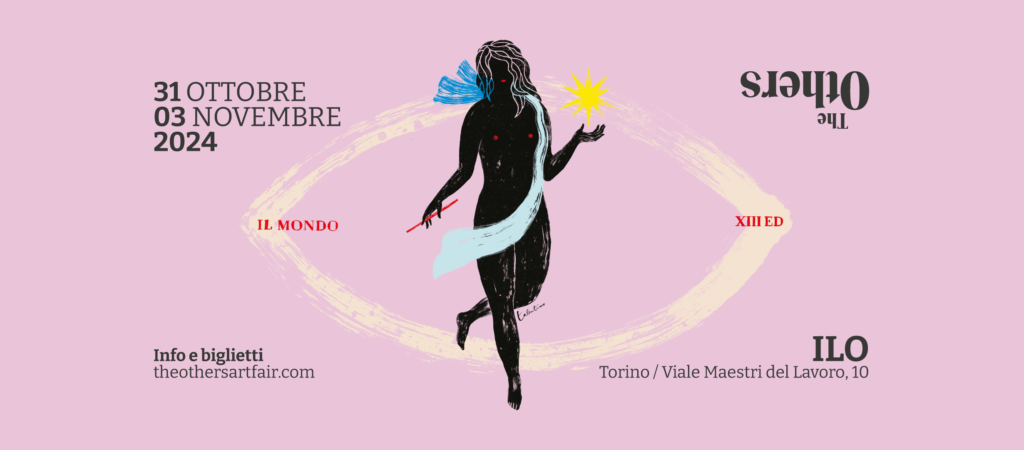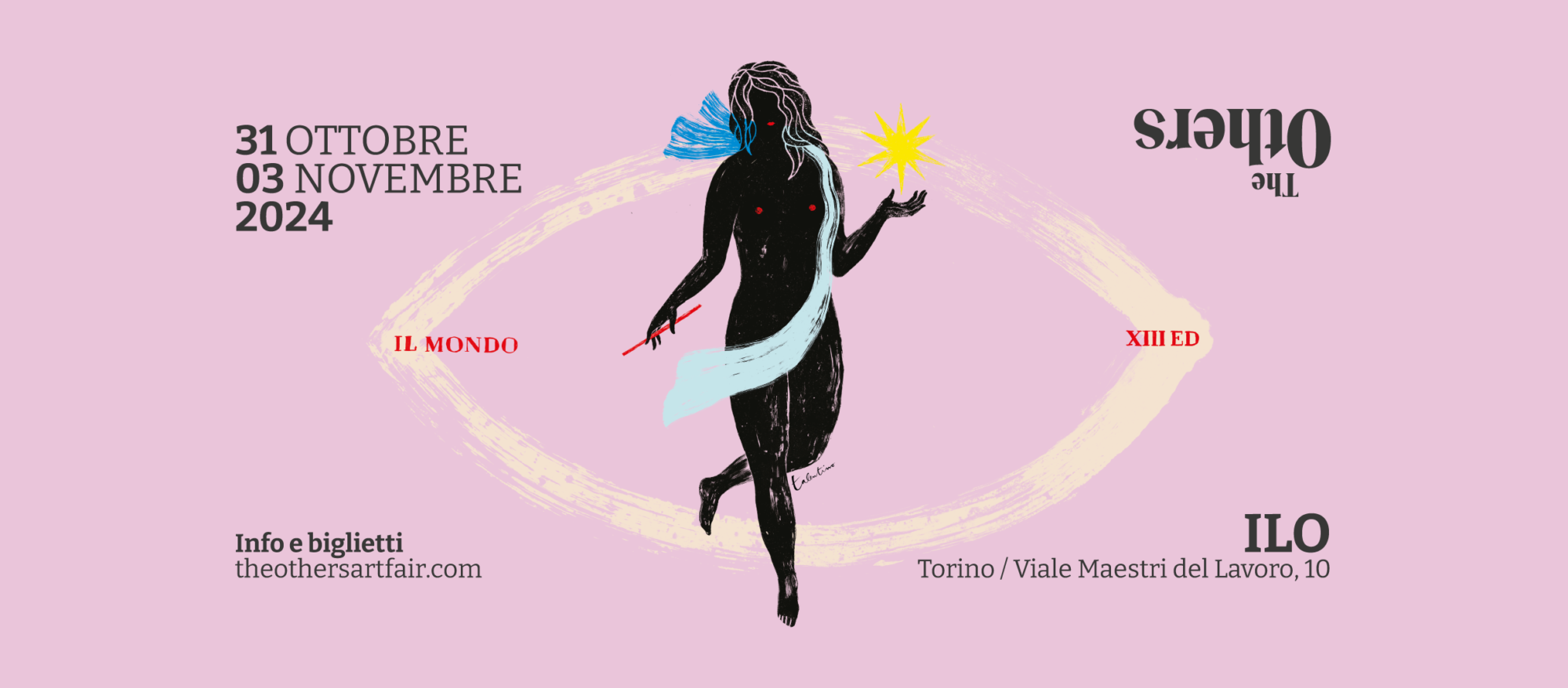
The day after I grew up
Mostra collettiva con opere di Gloria Franzin, Tullia Mazzotti, Roberta Sorbo e Jilan Wu
Presentata da BoA Spazio Arte Bologna
A cura di collettivo goo
“Così è per il nostro passato. È inutile cercare di evocarlo, tutti gli sforzi della nostra intelligenza sono vani. Esso si nasconde all’infuori del suo campo e del suo raggio d’azione in qualche oggetto materiale (nella sensazione che ci verrebbe data da quest’oggetto materiale) che noi non supponiamo.” Marcel Proust, La Strada di Swann, 2007 ed. Einaudi (1954)
Se chiudiamo gli occhi, siamo ancora lì. Un preciso schema di luci e ombre, un pomeriggio placido, luoghi tanto familiari da risultare sfocati nei loro contorni. Poche esperienze umane sono universali come i ricordi della nostra infanzia. I lavori e le poetiche di Gloria Franzin, Tullia Mazzotti, Roberta Sorbo e Jilan Wu si incontrano in questa intersezione: le memorie dell’infanzia incombono nel presente, riportate alla luce da oggetti, luoghi o gesti che le innervano di vecchie e nuove emozioni. La pittura, il disegno e la scultura diventano i medium di elezione per fissare le stratificazioni del ricordo.
Durga Chew-Bose scrive che il ricordo si nasconde in silenzio, pronto ad attaccarci e ad irrompere nelle nostre vite non appena qualcosa si rompe. Un agguato complesso da gestire, che diventa sempre più nostalgico man mano che cresciamo. The day after I grew up, il giorno dopo che sono cresciutǝ, potrebbe forse essere proprio il primo giorno in cui facciamo esperienza del ricordo nel modo in cui le artiste ce lo presentano: una traccia lontana e stratificata dal tempo, dalle emozioni e dalle loro rielaborazioni. Un’esperienza che, per tornare all’immaginario di Proust, è capace di scardinare la banalità del nostro presente, di rendere “indifferenti le vicissitudini della vita” nella sua potenza e capacità di farci comprendere, in un istante, chi siamo e che cosa è davvero importante per noi. I lavori selezionati ci pongono in limine: sono portali che possiamo varcare per farci trasportare in una dimensione completamente altra da noi, eppure familiare e profondamente condivisa, in cui i ricordi delle artiste agiscono profondamente sul nostro immaginario.
Nel lavoro di Gloria Franzin, la pittura diventa una pratica performativa, che ripropone e analizza processi mentali, generando dimensioni in cui le soglie tra familiare e ignoto, definizione ed indefinitezza si sovrappongono e restano aperte, aprendo l’immagine a nuove visioni, a nuove configurazioni soggettive. Nelle sue tele, gli oggetti diventano luoghi dove memorie e vissuti si sedimentano, evocando frammenti di passato che emergono dall’indeterminatezza del ricordo: festoni o coriandoli rimasti alla fine di una festa, giocattoli dall’immagine sfocata nonostante i contorni definiti. Un tratto che tiene insieme i contorni delle cose è presente anche nei delicati disegni di Franzin, come a suggerire il segno di ciò che sopravvive dei ricordi e il tentativo di dare forma alla loro vaghezza. Alcuni disegni parte della serie esposta sono tratti da immagini fotografiche appartenenti all’album d’infanzia dell’artista, mentre altri provengono da immagini più recenti, talvolta rubate oppure inventate. Uno strato di carta velina avvolge i disegni, fungendo da delicato involucro protettivo che, allo stesso tempo, rende ancora più etereo e opaco ciò che è rappresentato.
Per Tullia Mazzotti il paesaggio è uno spazio intimo e riflessivo, interiore ed esteriore, dove evocare ricordi ed esperienze d’infanzia ad essi legati. L’artista utilizza pittura, disegno e scrittura per sondare la fugacità della memoria e per trattenere e custodire immagini mentali lontane o vicine, che diventano visioni ideali del suo personale mondo interiore. In questa natura idealizzata, il paesaggio perde le sue forme nette, soccombendo alla memoria che rimescola, tralascia e inventa i dettagli. Dalla foschia emerge potente il colore, nelle sfumature di verde e di bianchi ora intensi ora tenui e lattiginosi. La scrittura occupa un ruolo particolarmente significativo nella ricerca di Mazzotti: da un lato, trae esperienze e riflessioni da trasferire su carta e tela dai diari che tuttora scrive; dall’altro, in alcuni lavori è la scrittura stessa a diventare protagonista. Questi lavori su carta sono caratterizzati dalla ripetizione ossessiva e stratificata di tratti ondulatori simili alla scrittura: mescolati e compenetrati, i caratteri sovrapposti tentano di dar voce ad emozioni profonde e inesprimibili, con la speranza di raggiungere una catarsi attraverso il mezzo espressivo.
Nella sua pratica artistica Roberta Sorbo unisce pittura e scultura per costruire frammenti di mondi alternativi, immagini che richiamano le forme e i colori del cosmo e della natura. Senza titolo (Corpi in quiete) si sviluppa a partire dalla ricerca e appropriazione di forme abbandonate: scarti di architetture urbane occupano un nuovo spazio divenendo matrice dell’opera. Attraverso il calco di questi scarti, l’artista genera una copia, creando una connessione in cui il lavoro vive in ricordo della sua matrice, diventando allo stesso tempo veicolo di una nuova narrazione. I materiali utilizzati da Sorbo si collegano ulteriormente alla sua poetica: la duttilità della cera e l’apparente solidità del gesso creano diversi livelli di tattilità, che uniti al pigmento compongono un’immagine evocativa di frammenti di geologie lontane, di mondi tanto distanti quanto vicini. L’opera di Sorbo è una riflessione sulla fragilità della materia, che come un corpo, muta e si consuma, si impregna di vissuto, tracce e pensieri. Se le sculture pittoriche dell’artista raccontano di porzioni di cielo, terra, ghiacci e pianeti, è proprio la loro fragilità a riportarli ad una dimensione umana, come corpi che si reggono fra loro in un equilibrio delicato.
Le opere di Jilan Wu nascono dal bisogno di esorcizzare emozioni forti e malinconiche. Cresciuta lontano dai propri genitori, per tutta l’infanzia l’artista ha desiderato il loro amore senza poterlo ottenere. Il ricordo ancestrale di questo abbandono si esprime nella sua pittura attraverso il gesto dell’abbraccio, che simboleggia il legame affettivo che le è mancato e la paura della separazione e della solitudine che ancora oggi la influenza. Il corpo umano, nelle sue gestualità e nei suoi legami con altri corpi, è sempre presente nei lavori di Wu. Le sottili variazioni di colore esprimono la natura complessa dei rapporti umani, con le loro fragilità e dipendenze, mentre il giallo e il rosso rappresentano le emozioni forti che l’artista nasconde nel suo mondo interiore. La dimensione del corpo e quella del tempo sono due elementi fondamentali nella sua ricerca. Se tramite un’attenta pratica dello yoga Wu è riuscita a prendere consapevolezza dei segni che le emozioni lasciano sul corpo, il rapporto con il tempo rimane immerso nella complessità, ben espressa dal proverbio cinese: un centimetro di tempo equivale ad un centimetro di oro, ma un centimetro di oro non può comprare un centimetro di tempo.
Collettivamente, le opere di Franzin, Mazzotti, Sorbo e Wu intrecciano una conversazione sul tempo, la memoria e il ricordo, gli ‘intricati arabeschi’ della nostra mente in cui, come scrive Benjamin nel suo ritratto di Proust in Avanguardia e Rivoluzione, ‘il ricordo è la trama e l’oblio l’ordito.’
I nostri ricordi non si ergono immobili e perfetti nella solitudine della nostra mente: dimentichiamo e ricordiamo costantemente, in una mescolanza di passato e presente; ricostruiamo e mettiamo in discussione attraverso la condivisione e i legami con le altre persone.
Con i loro lavori, le artiste sembrano alludere alla contraddizione insita nel concetto stesso di interiorità, come descritta da Sam Johnson-Schlee: mentre siamo sol3 dentro noi stess3, ci intrecciamo alle vite degli altri molto più profondamente di quanto potremmo fare con interazioni esteriori, ma allo stesso tempo siamo spesso inconsapevoli dell’intimità che nasce da questo tipo di condivisione.
Opere citate:
Marcel Proust, La Strada di Swann, 2007 ed. Einaudi (1954)
Durga Chew-Bose, Too Much and Not the Mood, 2017, Ferrar, Straus and Giroux
Sam Johnson-Schlee, Living Rooms, 2022, Peninsula Press
Walter Benjamin, Avanguardia e Rivoluzione, Einaudi, 1976
The day after I grew up
Group exhibition with works by Gloria Franzin, Tullia Mazzotti, Roberta Sorbo and Jilan Wu
Presented by BoA Spazio Arte
Curated by collettivo goo
“And so it is with our own past. It is a labour in vain to attempt to recapture it: all the efforts of our intellect must prove futile. The past is hidden somewhere outside the realm, beyond the reach of intellect, in some material object (in the sensation which that material object will give us) of which we have no inkling.” Marcel Proust, Swann’s Way, 1992 Modern Library Edition (1928)
If we close our eyes, we’re still there. The precise puddles of lights and shadows, a tranquil afternoon, places so familiar their outlines are blurred. Few human experiences feel as universal as childhood memories. Gloria Franzin’s, Tullia Mazzotti’s, Roberta Sorbo’s and Jilan Wu’s artworks and practices intersect precisely where childhood memories haunt the present, brought back to us by objects, places and gestures that are charged with old and new emotions. Painting, drawing and sculpture are the media chosen by the artists to fix the layering of remembrance.
Durga Chew-Bose writes that memory is lying in wait, ready to assault us and to break into our lives, as soon as something blisters. A hard to manage ambush, becoming ever more nostalgic as we grow older. The day after I grew up might truly be the first day when we experience memories as the artists present them to us: the trace of something long gone and embedded in time, emotions and our reworking of such emotions. An experience which, to go back to Proust’s imaginary, can derail the triviality of our daily lives, making “at once the vicissitudes of life indifferent to [us]” in its power to provoke an instantaneous understanding of who we are and what really matters. The artworks on show put us on a threshold: as the artists’ memories act upon our imagination, they open us up to dimensions that we do not know, yet feel familiar and deeply shared.
In Gloria Franzin’s work, painting becomes a performative practice to analyse and rework her mental processes: as the boundaries between familiar and unknown, definite and vague are blurred, new visions and new subjective configurations form. On her canvases, objects are places where memories accumulate and stratify, evoking fragments which emerge through the indefiniteness of the past: confetti or garlands left at the end of a party, toys blurred in spite of their clear outlines. A stroke that keeps together the outline of things is also present in Franzin’s delicate drawings, as to suggest the need to oppose a thin barrier to the uncertainty and the haziness of memories. Some of the drawings on display come from photographs in the artist’s childhood family albums, while others are inspired by more recent visuals, sometimes stolen or imagined. A layer of tissue paper wraps the drawings, at once providing a delicate shell of protection, while making the images ever more ethereal and opaque.
For Tullia Mazzotti, the landscape is an intimate space for reflection, where memories and experiences from her childhood come alive. The artist uses painting, drawing and writing as means to explore the fugacity of memories and to keep and fix mental images near and far, ideal visions of her personal interior world. Nature is thus idealised and the landscape loses its clear shapes, succumbing to memory which often shuffles, omits and invents the details. Colour emerges potently from the mist, in the shades of green and of whites, at times bright, faint or milky. Writing is significant in Mazzotti’s research, as the artist draws inspiration from her diaries for experiences and reflections to transpose into paintings or drawings. In other works, writing takes the centre stage. These works on paper are characterised by the stratified and obsessive repetition of wavy strokes, similar to writing: mingled and intertwined, these overlaid characters try to voice deep and untold emotions, with the hope of reaching a catharsis through expression.
In her artistic practice, Roberta Sorbo blends painting and sculpture to build fragments of alternative worlds, images that recall the shapes and colours of nature and the cosmos. Senza titolo (Corpi in quiete) draws from the research and appropriation of abandoned shapes: scraps of urban architectures take up new spaces, becoming moulds for the artworks. By casting these scraps, the artist makes a copy of sorts, establishing a connection as the work exists in memory of its mould, while simultaneously bringing about a new story. The materials chosen by Sorbo further connect with her practice: the ductility of wax and the illusory robustness of plaster provide different feelings of tactility and, together with the pigments, compose shapes evocative of distant geologies, of worlds at once near and far. Sorbo’s artworks reflect upon the fragility of matter which, like a body, mutates and consumes, saturated with life, traces and thoughts. If her pictorial sculptures recall portions of the sky, soil, glaciers and planets, it is precisely their fragile nature that brings them back to a human dimension, like bodies supporting each other in a delicate balance.
Jilan Wu’s artworks are born out of her need to dispel strong and melancholic feelings. The artist spent her childhood far from her parents, striving for their love without being able to fully experience it. The deeply set memory of this abandonment is expressed in her paintings through the gesture of the hug, which becomes a symbol of the emotional bond she couldn’t experience and of the resulting separation anxiety and fear of loneliness that she still struggles with. The human body, in its gestures and ties with other bodies, is always present in Wu’s works. The subtle variations in the shades of colours further reference the complex nature of human relationships with all their vulnerabilities and dependencies, while yellow and red in particular symbolise the strong emotions that the artist hides within. Body and time are the two fundamentals in Wu’s artistic practice. While practising yoga allowed the artist to become aware of the signs that emotions leave on the body, her relationship with time remains complex and well summarised by the Chinese saying: a centimetre of time equals a centimetre of gold, but a centimetre of gold can’t buy a centimetre of time.
Collectively, the works by Franzin, Mazzotti, Sorbo and Wu weave a conversation on time and memory, on the ‘intricate arabesques’ of our mind where, as written by Benjamin in his portrayal of Proust within Avantgard and revolution, ‘memory is the weave and oblivion is the warp’.
Our memories don’t exist static and perfect in the solitude of our mind: we remember and forget, constantly merging the past with the present; we piece together and question our memories through sharing and in our relationships with others.
The artworks on display seem to allude to a contradiction intrinsic to the very concept of inner reality, as described by Sam Johnson-Schlee: while we are alone within ourselves, we intertwine with the lives of others much more deeply that we could through external relationships, even though we’re often unaware of the intimacy that can originate from this form of communion.
Works cited:
Marcel Proust, Swann’s Way, 1992 Modern Library Edition (1928)
Durga Chew-Bose, Too Much and Not the Mood, 2017, Ferrar, Straus and Giroux
Sam Johnson-Schlee, Living Rooms, 2022, Peninsula Press
Walter Benjamin, Avanguardia e Rivoluzione, Einaudi, 1976

